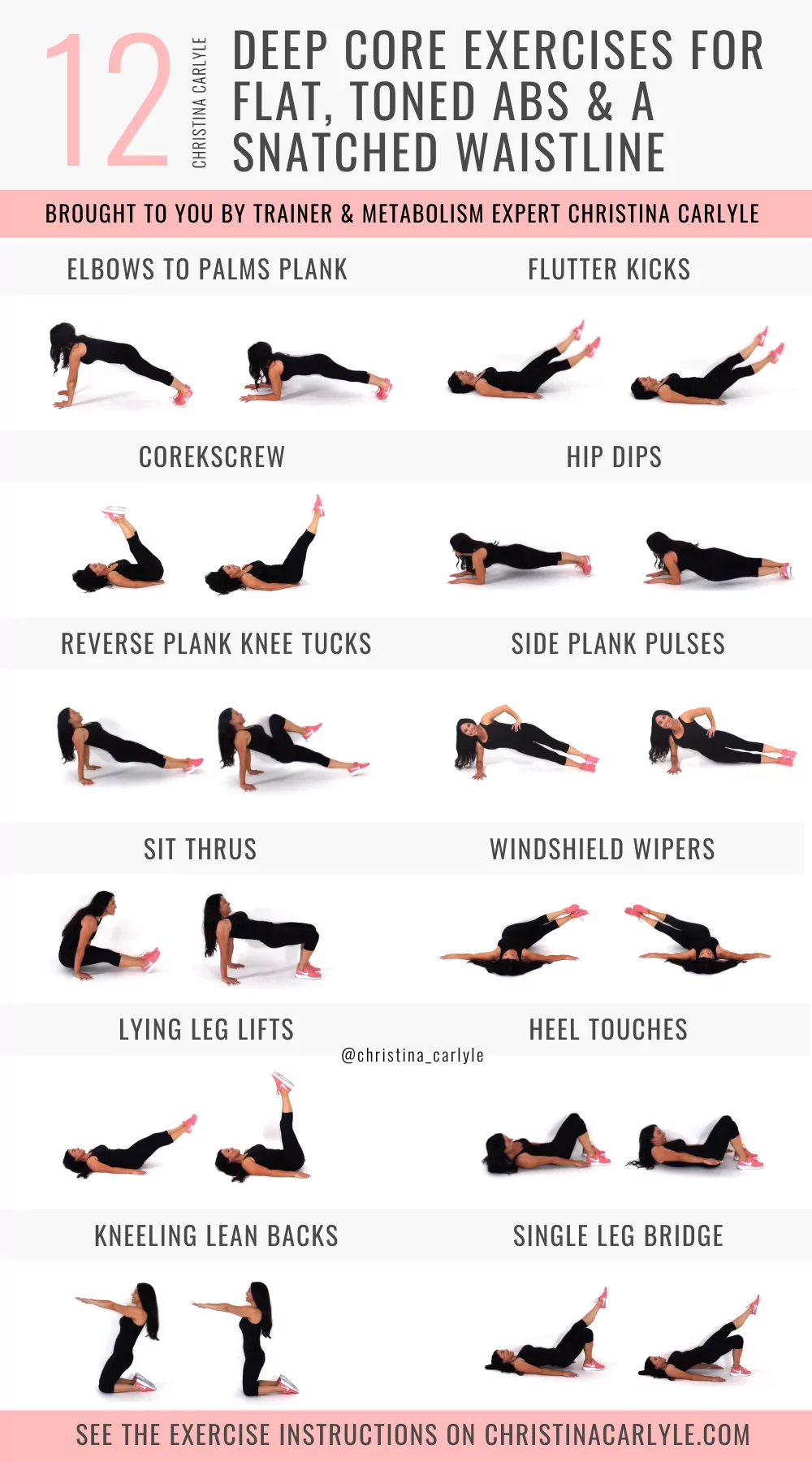Shop At Haya: Your Ultimate Shopping Guide
Discover the best shopping tips, trends, and deals for a smarter buying experience.
Core-tastic Moves to Transform Your Midsection
Unlock your dream midsection with these core-tastic moves! Transform your abs and elevate your fitness game today!
5 Essential Core Exercises for a Stronger Midsection
Having a strong midsection is essential for overall fitness and stability. Incorporating core exercises into your regular workout routine not only enhances your physical performance but also helps in injury prevention. Here are 5 essential core exercises that can transform your midsection and contribute to a well-rounded fitness regimen:
- Plank: A classic core exercise that engages multiple muscle groups, the plank helps build endurance in your abs, back, and shoulders. Aim to hold this position for at least 30 seconds, gradually increasing the duration as you gain strength.
- Russian Twists: This dynamic twist engages the obliques and enhances rotational strength. Perform this exercise seated, twisting your torso side to side while holding a weight or medicine ball.
- Dead Bug: This exercise focuses on maintaining a strong core while moving your limbs. Lie on your back with your arms in the air and knees bent, extending opposite arms and legs while keeping your back flat.
- Mountain Climbers: A fantastic combination of cardio and strength, mountain climbers engage your entire core while also boosting your heart rate. Start in a plank position and alternate bringing your knees to your chest quickly.
- Bridges: Targeting the glutes and lower back, bridges help improve pelvic stability. Lie on your back with your knees bent, lift your hips towards the ceiling, and hold for a few seconds before lowering.

How to Incorporate Core Workouts into Your Daily Routine
Incorporating core workouts into your daily routine doesn't have to be time-consuming or daunting. Start by identifying small pockets of time during your day that can be dedicated to strengthening your core. For instance, you can perform simple exercises like planks, bridges, or bicycle crunches during your morning routine or while watching TV in the evening. Aim for 10-15 minutes of targeted core training, and you’ll begin to notice improvements in your strength and stability. Remember to keep your form correct to maximize effectiveness and avoid injuries.
To keep your core workouts engaging and consistent, consider creating a weekly schedule that incorporates various exercises. Here’s a sample plan:
- Monday: Plank (3 sets of 30 seconds)
- Wednesday: Russian twists (3 sets of 15 reps)
- Friday: Bicycle crunches (3 sets of 15 reps each side)
- Sunday: Leg raises (3 sets of 10 reps)
The Science Behind Core Strength: Why It Matters for Overall Fitness
Core strength is a fundamental component of overall physical fitness, encompassing the muscles in your abdomen, lower back, hips, and pelvis. These muscles work together to stabilize your body during movement and are crucial for maintaining proper posture. In fact, a strong core acts as a foundation for all physical activities, whether you're lifting weights, running, or simply standing. When your core is weak, it can lead to poor balance and coordination, making you more susceptible to injuries. This is why integrating core-strengthening exercises into your fitness routine is essential not just for athletes but for anyone wanting to improve their overall health and performance.
Moreover, having a strong core contributes significantly to overall body functionality. A well-developed core helps in preventing back pain, enhancing athletic performance, and facilitating everyday movements such as bending and twisting. When the core is engaged, it allows for the proper transfer of power throughout the body, leading to improved efficiency in movements. Research shows that individuals with better core strength are not only more physically capable but also maintain a healthier body posture, which helps reduce stress on the spine and minimizes the risk of injuries over time. Hence, prioritizing core strength is not merely an aesthetic choice but a vital element of comprehensive physical health.